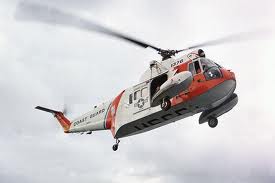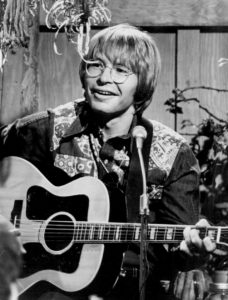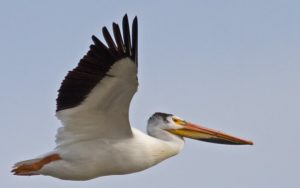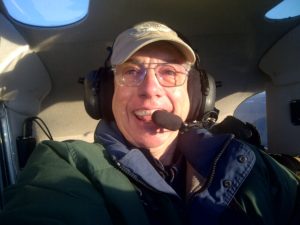Most people won’t take much note of the recent passing of a retired Coast Guard pilot named Matt Ahearn. I did. It brought back a favorite memory of my time in the Coast Guard and of one of that service’s great airmen.
It was March 9, 1970. We were cruising down the coastline, low over the cliffs lining the Pacific Ocean just south of San Francisco. The HH52A helicopter was the search and rescue workhorse of the Coast Guard at that time. Underpowered and overweight, it still performed admirably in the hands of capable pilots. My time in the left seat of the helicopter was rare enough that it was always a thrill. LCDR Matt Ahearn was the pilot. As a SAR (search and rescue) crewman, I flew with several different pilots. Ahearn was one of my favorites. I didn’t know him well, but found him to be competent and always willing to give an eager enlisted man some stick time.

I was in the left seat because at that time we were short of co-pilots. When a flight went out without a left seater, the SAR crewman would often occupy the left seat unless he was needed to run the hoist from the rear open doorway. Then he’d scamper into the back, open the sliding door and lower the rescue basket. The old fashioned “Horsecollar” sling was onboard and available, but regulations stated that it was only to be used by military personnel.
We got a call from the base that there was a case developing on the cliffs south of Half Moon Bay. Off we went. More details came in over the VHF. It seemed that a dog had fallen off the cliff and was in the surf among the rocks. There is no beach along that stretch of coastline, just an angry jumble of jagged rocks. We arrived on the scene and could see a couple of people on the cliff top. They gestured to us and we swooped down to the ocean below. There, clinging to a rock, was a big Labrador retriever. The dog’s perch was tenuous. Waves broke over his head and he was barely able to hang on to the rock on which he’d found temporary refuge. Mr. Ahearn and I talked it over. Although he could run the winch from his position, he was unwilling to lower me to the dog. I couldn’t blame him. I might have been willing to go down on the cable, but it wouldn’t have been smart. Without a co-pilot, who would normally be the poor slob we’d lower, the job was virtually impossible. We decided to land on the cliff and talk to the dog’s owner.
The HH52 settled to the ground on the cliff top. I hopped out and met the dog’s owner, a strapping young man and his father. The dog’s name was “Chris” and he had simply fallen off the cliff while scampering along the edge. I explained the situation, that without a copilot we just couldn’t lower someone to grab the dog. Or could we? Here was a motivated guy standing there talking to me. I knew it was against regs, but I scuttled back to the helo and got on the ICS (intercom system). “we could send that kid down for his dog”, I suggested to LCDR Ahearn.
“We can’t send a civilian in the horsecollar sling and the basket is too clumsy for this,” he observed. He thought for a moment. “Let’s take him down there so he can see the situation and we can go from there”.
I piled the kid in through the door and off we went. Ahearn maneuvered the helicopter as close to the rock as he could, allowing plenty of room for the rotor blades to clear the cliff. “Chris” was still clinging to his rock. He was shaking with cold and exhaustion. My heart went out to this helpless dog. “Can’t we just send the kid down to grab the dog?” , I implored the pilot. “It’ll just take a second”.
Ahearn was a dog lover. More importantly, as I learned that day, he cared more for results and solutions than blind obedience to rules.
“We can put him in there if he really wants to go”, the pilot cautioned me. “Only if he REALLY wants to go”.
Chris’ owner didn’t want to go. His reluctance was understandable. To be lowered on that little cable into raging surf and to be smacked against the rocks below was clearly not an experience to which he looked forward.
“Your dog is going to die if we don’t get him now”, I pointed out to the kid. “I can put you in the sling, lower you down and you grab your dog. I’ll have you back up here in a flash. What do you say?” The boy was still not completely sold. “He’s gonna die”, I reminded him.
“Uh, well, okay…”
I keyed my ICS. “He wants to go, Commander!”
“Okay, let’s do it”, Ahearn assented.
I put a lifejacket on the young man, then showed him how to don the horsecollar sling. I had him sit in the doorway as I directed the pilot over the hapless animal.
A Coast Guard helicopter pilot doesn’t look down at the end of the hoist cable like the pilot of a logging helicopter might. Instead, he depends on the hoist operator. That crewman maintains a steady verbal description of the position of the hoist. The pilot stares at the horizon and makes gentle changes in position and altitude, depending on what he hears from the crewman.
I kicked the kid out the door and hit “down” on the hoist switch. “He’s out the door and going down. Position is good. He’s fifty feet from the surface. Forward five feet. Looking good. Hold that position. He’s almost to the surface. Move right five feet. Hold that.”
Ahearn was a “great stick”. The corrections were smooth and gentle, in spite of wind and turbulence. The kid reached the dog. He grabbed hold of “Chris’” collar and I knew that was as good a hold as we were going to get. Simultaneously, I hit the “up” switch and directed the pilot, “move left twenty feet to clear the rocks. Hoist is coming up”.
Ahearn kept the helicopter clear of the rocks and at a relatively low altitude while I finished the hoist. The drenched kid reached the door and I hauled him in with every bit of strength I had. Chris’ eyes were as big as golf balls. I grabbed the dog’s tail and pulled the exhausted pooch into the helicopter while slamming the sliding door. We all collapsed in a dripping heap on the floor while Ahearn blasted back to the top of the cliff and landed beside the boy’s father, who was just beside himself with relief and joy at the scene he’d witnessed. The reunion was touching. The father was grateful. He kept pushing cash at me and I told him he didn’t have to do that.
The flight back to CGAS San Francisco was quiet. I believe that LCDR Ahearn and I shared the warm feeling of a mission accomplished and perhaps a little apprehension at the reaction our use of Coast Guard assets in an unauthorized manner might bring.
When I pulled off my flight suit later, tens and twenties came fluttering onto the deck. They ended up in the morale fund.
The case was just one of those which would prompt a small group of us to urge the Coast Guard to adopt a program utilizing the services of specially trained rescue swimmers. We wrote it up in a formal proposal. We called it SARWET and it would be rejected until after I was no longer in the service.
My friend AT2 Bill Thrall (who stayed in and eventually retired as a Commander) would carry the cause for some time and eventually there would be what is now the hugely successful Coast Guard rescue swimmer program. A program that might just owe a little of its inspiration to a scared black Lab named “Chris” and the superb flying of the late LCDR Matthew Ahearn, USCG (Ret).
Happy Swooping,
Brian



